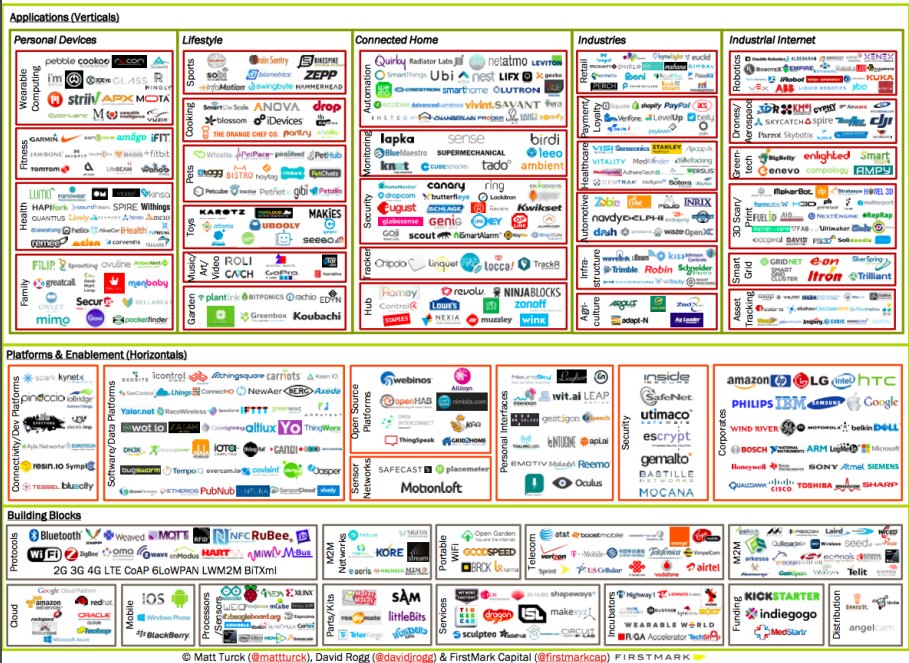How to Convince Your CEO to Invest in IoT (2/3)
Previously in part 1 of How to Convince Your CEO to Invest in IoT we demonstrated some biased reasoning behind the reluctance to technology. In this part 2 of our three part series, we will provide some easily understood applications of IoT, explain the basic components of IoT, the benefits of implementation, and some examples of IoT projects. Lastly, in the last part 3, we will conclude with the key questions with answers aimed to raise interest in IoT projects.
Explaining the Internet of Things to Non-technical Leadership
Imagine if things could speak, what would they say? The Internet of Things is the connection of things (physical devices) to the Internet which can then interpret the world in which we exist. Essentially, we give these things the power to “tell us” what is happening in an environment without needing to physically be there. Here are some examples that simply demonstrate things “speaking” through sensors:
- Embed voltage and current sensors within manufacturing equipment. The data received from these sensors will tell us, in real-time, if the machine is consuming proper amounts of energy. If the current is fluctuating or irregular in anyway the mechanic is alerted and act accordingly to right the wrong. This early diagnostic has reduced repair time and eliminated additional damage to the machine.
- Connecting our storefront cameras with human counters can educate business owners and managers to floor traffic patterns for improved product placement, or decreasing wait times by tracking customer tendencies, thus improving customer service and satisfaction.
- Connecting homes with presence sensors linked to security encrypted networks could analyze a home’s occupants to determine if high energy appliances like water heaters, TVs, lights, or washing machines should be powered off or on. These sensors are not only efficient for energy reduction but can also turn on lights or appliances to deter malicious intent by outsiders.
Components of an IoT Solution
One of the most challenging things about IoT is the diversity of providers across its value chain. My favorite picture that summarizes such complexity was presented by TechCrunch in an attempt to map the IoT Ecosystem and looked like this.
 In simpler words, there are thousands of combinations to achieve an IoT solution. Understanding each component or provider involved will help you choose the best combination for your next IoT idea:
In simpler words, there are thousands of combinations to achieve an IoT solution. Understanding each component or provider involved will help you choose the best combination for your next IoT idea:
Devices: There are 100s of devices these days and careful consideration should be payed to each based on their computing, connectivity, and durability. Ultimately though, choose a device based on the thing(s) or variable(s) you want to track, measure, or understand (i.e: presence, temperature, location, etc). Sensors are not the only way to connect physical things to the Internet though, actuators also allow users to provide data to the physical world from a computer. It can therefore be deduced that devices provide data in two directions: input and output.Click here for a list of electronic devices capable of having almost any type of sensor plugged in.
Connectivity: Based on your IoT project’s data storage and transfer rates, range, and power consumption requirements you can select from any number of devices. Simply, you need to choose among protocols (MQTT, HTTPS) and technologies (Wi-Fi, Bluetooth, Lora, SigFox, ZigBee, etc) to send collected data to the internet and receive command data from the user.
IoT Platform:IoT platformsare the cloud-based solutions that fill gaps between devices and information. IoT Platforms are places where data is sent, stored, processed, and returned as a visuals. These visuals or “widgets” are designed to assist developers and users to quickly interpret information for improved decision-making or situation monitoring. This real-time data can be visualizedwith different widgets likecharts, indicators, maps, and even devices controls. IoT platforms are enablement tools for managing device functionality, creating alerts triggered on data behavior, and/or mine historical data for determining trends or diagnostics. If you’re searching for a platform, check out this list of top IoT platforms by Hackster.
System integrators: This is not a component but the term for an IoT provider. We include it in this list because it’s perhaps one of the most important piece of the value chain. SI’s are in charge of putting together all the above components and more (like hardware manufacturing, software development, connectivity, data storage and a IoT platform) into a single IoT value offer that makes sense for your company. Because IoT can be a complex ecosystem where providers struggle to offer end-to-end products and services, system integrators provide this full service and make for an attractive option for businesses looking to economize or are unsure where to start. According to a TIA and Machina Study, 28% of US companies rank system integrators as their top trusted choice as an IoT partner. Furthermore, 59% of those companies also said that system integrators were leading the implementation of those ioT projects.
Benefits of Implementing IoT
IoT data will soon work as a new data source alongside CRMs, ERPs, Accounting and HR software, external data, and social media to support decision making across the businesses. Here are the main areas in business where IoT can help make more accurate and efficient decisions:
Operational Excellence
- Availability: monitoring, alert of immediate machines breakdowns, downtime analysis, consumables monitoring, and machine diagnostics.
- Performance: monitoring stoppages or performance reduction, global visualization of processes, and complete product chain monitoring.
- Quality: raw materials inspection, non-conforming subassemblies, and final product monitoring.
- Automated production: machine-to-machine communication can shepherd product lines with production autonomy, which refer to machines operating not by manual activation but based on the behavior of other machines.
- Energy management: monitoring every energy-consuming asset for consumption and regularity.
Enhanced Customer Experience
- Product feedback: embedding privacy friendly sensors to determine how customers use or abuse products. This insights is valuable for both R&D and marketing departments to develope new products and communications to fit a customer’s latent needs.
- New smart-product development: devices such as wearables and smart home appliances can be deployed to assist users and businesses with daily efficiencies.
- Point of Purchase monitoring: presence sensors can tell retailers, marketing teams, and development departments what the shelves or exhibits are saying; what products are moving; and which products attract the most attention?
- Distribution monitoring: connecting planes, trains, and automobiles to the internet can determine the conditions a product is transported in to ensure quality control.
What’s next
Stay tuned for part 3/3 in our How to Convince your CEO to Invest in IoT series, where we provide some responses to the main concerns related to implementing IoT in businesses.


